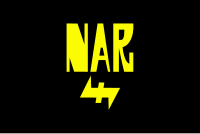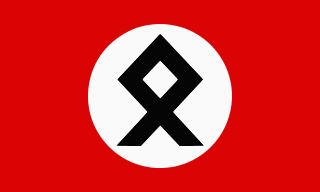
The National Vanguard is a name that has been used for at least two neo-fascist and neo-Nazi groups in Italy.

Stefano Delle Chiaie was an Italian neo-fascist terrorist. He was the founder of Avanguardia Nazionale, a member of Ordine Nuovo, and founder of Lega nazionalpopolare. He went on to become a wanted man worldwide, suspected of involvement in Italy's strategy of tension, but was acquitted. He was a friend of Licio Gelli, grandmaster of P2 masonic lodge. He was suspected of involvement in South America's Operation Condor, but was acquitted. He was known by his nickname "il caccola" as he was just over five feet tall - although he stated that originally, the nickname came from his very young involvement, at age 14, in the Italian Social Movement (MSI), a neo-fascist political party established after the war

The Bologna massacre was a terrorist bombing of the Bologna Centrale railway station in Bologna, Italy, on the morning of 2 August 1980, which killed 85 people and wounded over 200. Several members of the neo-fascist terrorist organization Nuclei Armati Rivoluzionari were sentenced for the bombing, although the group denied involvement.

Poliziotteschi constitute a subgenre of crime and action films that emerged in Italy in the late 1960s and reached the height of their popularity in the 1970s. They are also known as polizieschi all'italiana, Euro-crime, Italo-crime, spaghetti crime films, or simply Italian crime films. Influenced by both 1970s French crime films and gritty 1960s and 1970s American cop films and vigilante films, poliziotteschi films were made amidst an atmosphere of socio-political turmoil in Italy known as Years of Lead and increasing Italian crime rates. The films generally featured graphic and brutal violence, organized crime, car chases, vigilantism, heists, gunfights, and corruption up to the highest levels. The protagonists were generally tough working class loners, willing to act outside a corrupt or overly bureaucratic system.
The Banda della Magliana was an Italian criminal organization based in Rome. It was founded in 1975. Given by the media, the name refers to the original neighborhood, the Magliana, of some of its members.
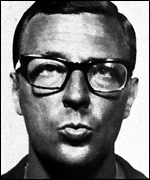
Carmine "Mino" Pecorelli was an Italian journalist, shot dead in Rome a year after former prime minister Aldo Moro's 1978 kidnapping and subsequent killing. He was described as a "maverick journalist with excellent secret service contacts". According to Pecorelli, Aldo Moro's kidnapping had been organized by a "lucid superpower" and was inspired by the "logic of Yalta". Pecorelli's name was on Licio Gelli's list of Propaganda Due masonic members, discovered in 1980 by the Italian police.

In Italy, the phrase Years of Lead refers to a period of political violence and social upheaval that lasted from the late 1960s until the late 1980s, marked by a wave of both far-left and far-right incidents of political terrorism and violent clashes.
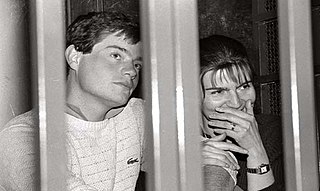
Giuseppe Valerio Fioravanti is an Italian former terrorist and actor, who with Francesca Mambro, was a leading figure in a far-right terrorist group, Nuclei Armati Rivoluzionari. Fioravanti appeared in films and television from a young age, and in his early teens was the most famous child in Italy. He and Mambro were fugitives wanted for terrorist offences by their early twenties, they spent a further period on the run as suspects in the Bologna bombing. Both were captured after gunfights with police, and later found guilty of responsibility for the Bologna train bombing; they were sentenced to ten life terms, plus 250 years. Fioravanti was released from prison in 2009.
Mario Amato was an Italian magistrate, assassinated in 1980 by NAR members Gilberto Cavallini and Luigi Ciavardini.
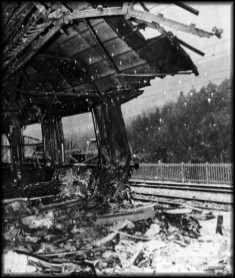
The Train 904 bombing was a terror attack which occurred on 23 December 1984, in the Apennine Base Tunnel. A bomb on the 904 express train from Naples to Milan was detonated, killing 16 and wounding 266. The bombing location was near the location of the Italicus Express bombing ten years previously.
The Acca Larentia killings, also known in Italy as the Acca Larentia massacre, were a double homicide that occurred in Rome on 7 January 1978. The attack was claimed by the self-described Nuclei Armati per il Contropotere Territoriale. Members of militant far-left groups were charged but acquitted, and the culprits were never identified.
Massimo Carminati, referred by the press as one of "the kings of Rome", in the context of the onset of the "Mafia Capitale" investigations among 3 other bosses, nicknamed as "il Cecato", is an Italian underworld figure and former member of far-right terrorist group Nuclei Armati Rivoluzionari and criminal gang Banda della Magliana, which were at the centre of sensational allegations of state collusion and Masonic conspiracy during Italy's Years of Lead. Carminati was investigated for match fixing in 2012. In 2014 he was arrested with 36 others on allegations of running a corrupt network that infiltrated Rome's public administration. He was charged with fraud, money laundering, embezzlement, and the bribing of public officials. In 2017, Carminati was sentenced to 20 years in jail. The sentence was revoked in 2018 and he is free since 2020.

Franco Giuseppucci was an Italian criminal, and one of the founders and bosses of the Banda della Magliana, an Italian criminal organization based in the city of Rome that was particularly active throughout the late 1970s until the early 1980s.
Manlio Vitale is an Italian criminal and high-ranking member of the Banda della Magliana, an Italian criminal organization based in the city of Rome. He is known as "Er Gnappa", which is Romanesco for "short person".

Francesca Mambro is an Italian activist and former terrorist, who was a leading member of the far-right Italian Armed Revolutionary Nuclei (NAR). She was arrested in Rome in March 1982 for complicity in the Bologna bombing of August 1980. Mambro was tried and found guilty of 96 murders, for which she received a total of nine life sentences equating to over 84 years' imprisonment. Mambro was paroled in 2013 and her sentence expired five years later.
Nazareno Andrea De Angelis or Nanni was an Italian militant and politician and a leader of Terza Posizione.
In the First Italian Republic, after the Second World War, many armed, paramilitary, far-right organizations were active, as well as far-left ones, especially in the Years of Lead.
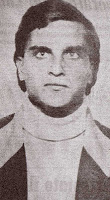
Franco Anselmi was an Italian neofascist terrorist who was active in the organization Nuclei Armati Rivoluzionari. He was killed during an attempt to rob a gun shop in Rome.

Alessandro Alibrandi was an Italian neofascist terrorist who was active in the organization Nuclei Armati Rivoluzionari. He was killed during a firefight with the police in Rome while attempting to steal their weapons.
Paolo Signorelli was an Italian author, activist, and politician of the extreme right.
